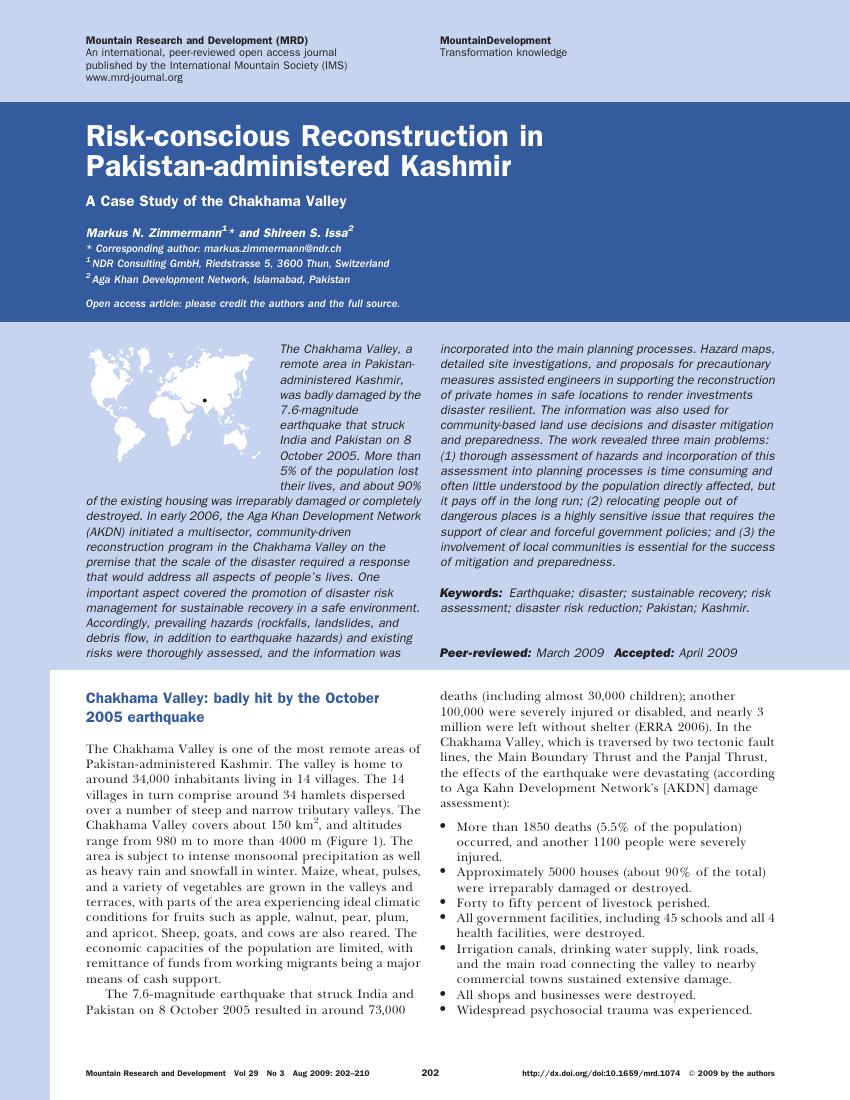The Chakhama Valley, a remote area in Pakistan-administered Kashmir, was badly damaged by the 7.6-magnitude earthquake that struck India and Pakistan on 8 October 2005. More than 5% of the population lost their lives, and about 90% of the existing housing was irreparably damaged or completely destroyed. In early 2006, the Aga Khan Development Network (AKDN) initiated a multisector, community-driven reconstruction programme in the Chakhama Valley on the premise that the scale of the disaster required a response that would address all aspects of people's lives. One important aspect covered the promotion of disaster risk management for sustainable recovery in a safe environment. Accordingly, prevailing hazards (rockfalls, landslides, and debris flow, in addition to earthquake hazards) and existing risks were thoroughly assessed, and the information was incorporated into the main planning processes. Hazard maps, detailed site investigations, and proposals for precautionary measures assisted engineers in supporting the reconstruction of private homes in safe locations to render investments disaster resilient. The information was also used for community-based land use decisions and disaster mitigation and preparedness.
The work revealed three main problems:
- thorough assessment of hazards and incorporation of this assessment into planning processes is time consuming and often little understood by the population directly affected, but it pays off in the long run;
- relocating people out of dangerous places is a highly sensitive issue that requires the support of clear and forceful government policies; and
- the involvement of local communities is essential for the success of mitigation and preparedness.
